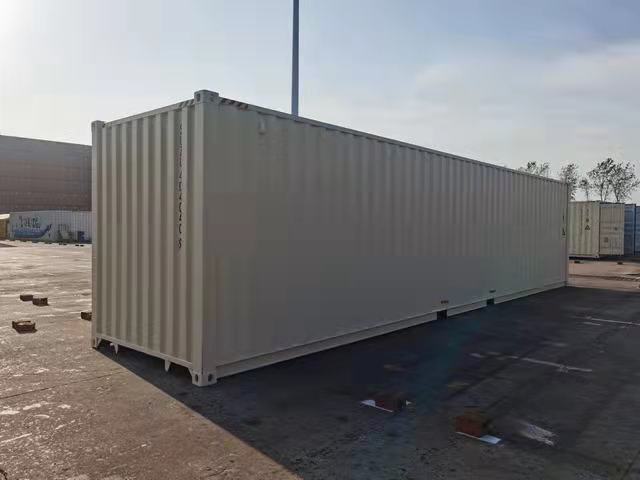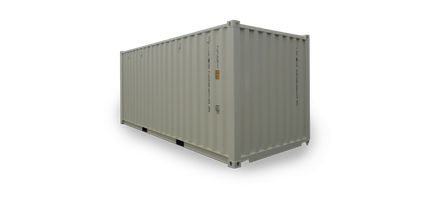The Ultimate Overview to Selecting the Right Delivery Container for Your Demands
When it involves selecting the right delivery container, comprehending your specific requirements is crucial. You'll desire to take right into account variables like size, kind, and material to assure you make the very best option. From basic dimensions to specialized alternatives, there's a great deal to check out. Plus, budgeting for both the container and any kind of modifications can make a large difference. Allow's damage down the key facets to help you locate the perfect fit for your demands.
Recognizing Delivery Container Sizes
When you're choosing a shipping container, comprehending the different dimensions available is vital for making the best decision. Shipping containers normally can be found in common sizes of 20 and 40 feet, yet you'll additionally locate other measurements. Knowing the size you need depends on what you intend to store or transport.If you're moving smaller products, a 20-foot container may be optimal, while larger shipments typically need a 40-foot container. The height can also differ; high dice containers provide additional upright room, which can be helpful for taller goods.Before determining, gauge your freight, and take into consideration how much room you'll need for loading and dumping. Constantly consider potential future demands-- choosing a slightly bigger container may conserve you headache down the line. Eventually, choosing the appropriate size will certainly improve efficiency and assure your products are safe and secure throughout transit
Kinds Of Shipping Containers Available
There are numerous sorts of delivery containers offered, each made for certain purposes and freight needs. The typical completely dry container is versatile, excellent for general freight. If you're shipping subject to spoiling goods, take into consideration a refrigerated container, which keeps a controlled temperature. For extra-large items, high dice containers offer additional elevation, accommodating taller loads.If you require to transport heavy equipment or equipment, flat shelf containers provide a strong base without wall surfaces. Open-top containers allow for very easy loading of tall cargo, with a detachable tarp covering for security. If you're searching for versatility, take into consideration a collapsible container that can be conveniently stored when not in use.Lastly, specialized containers like tank containers are utilized for fluids, while vented containers are designed for bulk cargo that requires air flow. Recognizing your cargo type will assist you select the appropriate container to meet your shipping needs effectively.
Product Factors To Consider for Sturdiness
When choosing a delivery container, the product plays an essential duty in its durability. You'll wish to weigh the benefits of steel versus aluminum, especially concerning corrosion resistance. Understanding these elements can help you make a more informed choice for your shipping needs.
Steel vs. Light weight aluminum Containers
Just how do you pick in between steel and light weight aluminum containers for your shipping needs? Start by considering resilience. Steel containers are robust and deal superb toughness, making them suitable for heavy loads and harsh problems. They withstand damage from impacts and are often less costly, which can be a major factor for budget-conscious buyers.On the various other hand, aluminum containers are lightweight, which can conserve you on shipping costs. They're simpler to maneuver and are a great selection if you require to transfer items often. Light weight aluminum is generally extra costly and less robust than steel. Weigh your certain needs meticulously, consisting of weight, price, and the sort of cargo you'll be delivery, to make the appropriate selection for your scenario.
Deterioration Resistance Aspects
Picking the ideal product does not just include weight and cost; corrosion resistance plays a considerable role in resilience. When choosing a shipping container, consider the setting it'll encounter. Steel containers, while solid, can corrosion if not effectively dealt with. Try to find options with safety layers or galvanization to improve their life expectancy. Light weight aluminum, on the other hand, offers all-natural rust resistance, making it perfect for seaside areas or humid conditions. It can be extra pricey. Additionally, assess the container's usage-- if it'll be exposed to chemicals or harsh weather, focus on materials that can endure these conditions. Buying a corrosion-resistant container now can save you from costly repair work or replacements down the line. Pick sensibly for lasting benefits.
Alterations and Customization Options
Delivering containers aren't simply for transporting items; they can be changed to meet your specific needs with different modifications and modification alternatives. You can convert a standard container right into a comfy office, a momentary retail shop, or perhaps a personal health club. The opportunities are almost endless.Think about including home windows, insulation, or ventilation to improve convenience. You may also take into consideration electric wiring, pipes, and even personalized shelving to improve functionality. If protection's a worry, reinforced locks can give tranquility of mind.For aesthetic charm, you can paint the container or include a distinct layout to make it stick out. Don't ignore floor covering choices-- whether you want sturdy plywood or something a lot more sophisticated, it can elevate the space.Ultimately, customizing your delivery container to fit your demands can improve use and produce an unique setting that reflects your design.
Assessing Your Transport Needs
When it pertains you can find out more to utilizing your changed shipping container, comprehending your transport needs is crucial. Start by identifying what you'll be delivery-- whether the original source it's heavy devices, retail items, or personal items. Each kind of freight has different demands pertaining to size, weight, and accessibility.Next, take into consideration the distance and setting of transportation. Are you shipping in your area, nationally, or internationally? This influences the container's design and performance. If you're making use of trucks, guarantee your container fits typical dimensions for easy loading and unloading.Additionally, consider transportation problems. Will your items need unique protection from weather or temperature fluctuations? If so, you might require insulation or ventilation functions in your container.Lastly, examine exactly how frequently you'll be delivering items. Constant deliveries might require a more durable and flexible container to satisfy continuous demands. By attending to these aspects, you'll be well-prepared to pick the appropriate delivery container for your demands.
Budgeting for Your Shipping Container
Establishing a spending plan for your delivery container is necessary for making certain a smooth acquiring process. Figure out just how much you can manage to spend. Prices can differ significantly based on dimension, condition, and type. New containers commonly set you back more, yet utilized ones can provide substantial savings.Next, consider any additional prices you could incur, such as transport charges, delivery fees, and alterations. If you plan to customize the container, consider those expenditures too. Research different providers to compare prices and locate the ideal offer that meets your needs.Don' t fail to remember to consist of any kind of licenses or guidelines that may relate to your purchase and use the container. By clearly detailing your budget, you'll be much better prepared to make educated choices, guaranteeing you get the best container without damaging the financial institution.
Upkeep and Take Care Of Long life
To assure your delivery container lasts for years, regular upkeep is essential. Begin by evaluating the exterior for corrosion, damages, and damage. If you detect any kind of issues, resolve them immediately to avoid more deterioration. Clean the container regularly, both throughout, to eliminate dust, debris, and moisture that can cause corrosion.Ensure the doors secure effectively and lubricate the joints his response to avoid corrosion and sticking. If you're utilizing the container for storage, consider including air flow to minimize moisture and mold and mildew development. For added security, apply a rust-inhibiting paint or sealer annually.If your container's situated in a rough setting, like coastal areas, you might need to enhance upkeep regularity. Maintain an eye on the floor covering, as well; any type of signs of wear must be fixed today. With these basic steps, you'll extend the life of your delivery container considerably.
Regularly Asked Inquiries
Just how Do I Find a Reliable Delivery Container Provider?
To discover a trusted delivery container vendor, start by looking into on the internet reviews, asking for suggestions from friends or market get in touches with, and contrasting prices. Constantly check their qualifications and assurance they offer high quality containers that fulfill your demands.

Can I Rental Fee a Delivery Container Rather of Buying?
Yes, you can most definitely rent a shipping container as opposed to purchasing one. Several vendors use rental alternatives, which can save you money and supply flexibility if you only require it for a brief period.
What Allows Are Required for Container Positioning?

Are Shipping Containers Weatherproof and Ideal for Outdoor Storage?
Yes, shipping containers are normally weatherproof, made to hold up against harsh conditions. Their durable building and construction keeps your things secure and dry, making them appropriate for outside storage space. Simply guarantee appropriate ventilation to stop moisture accumulation inside.
Just how Do I Transfer a Delivery Container When Purchased?
